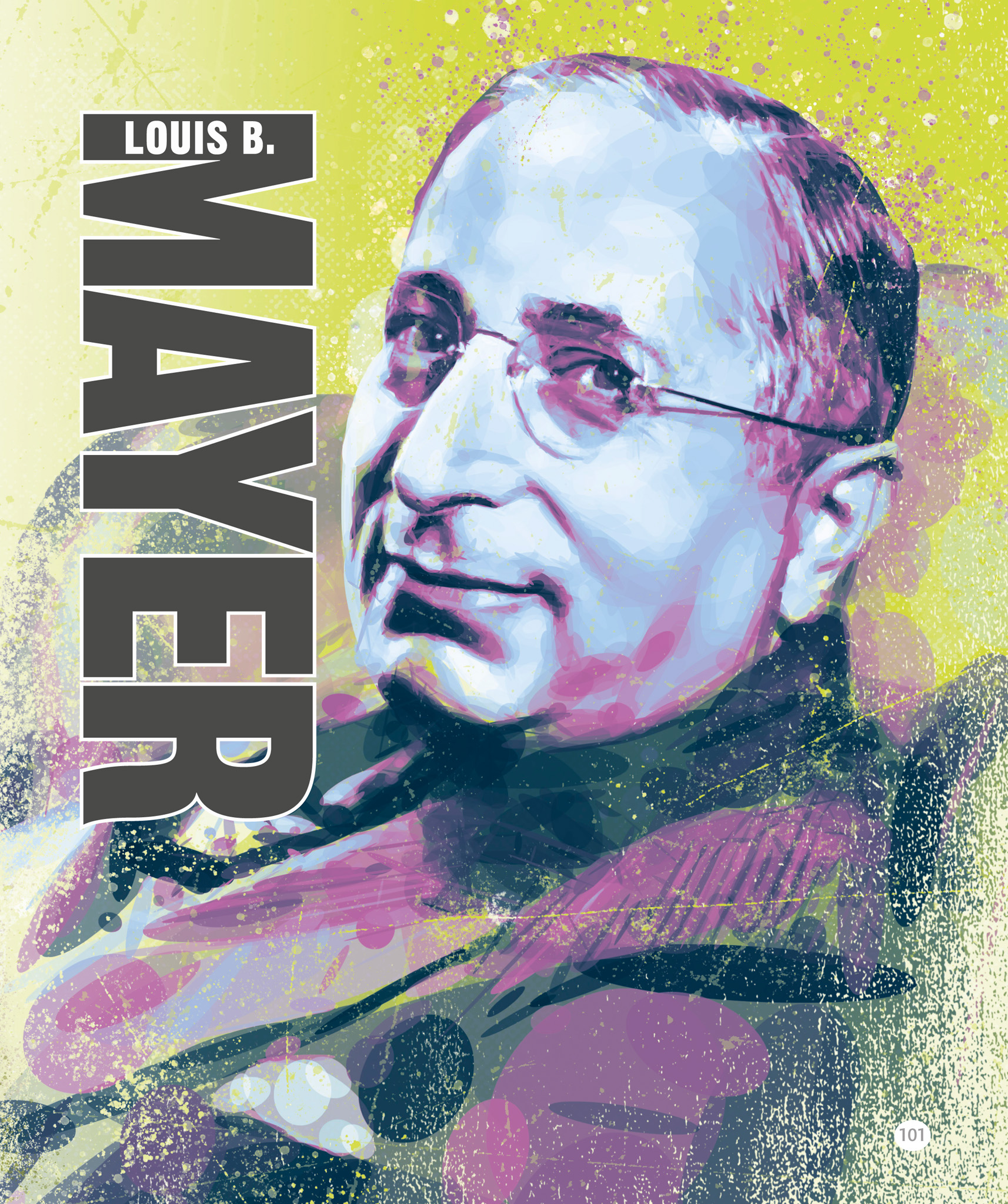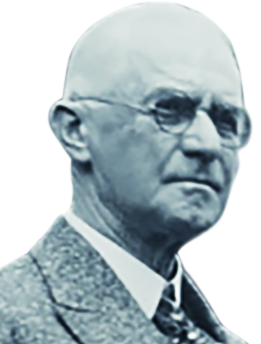
LOUIS B. MAYER
1884–1957
The cofounder of Metro-Goldwyn-Mayer (MGM) studios, Louis B. Mayer was the most successful movie producer of the 1930s and ’40s. Under his direction, MGM built the biggest stable of star actors, top directors, and acclaimed screenwriters in Hollywood, during what was considered to be the golden age of film.
Louis Burt Mayer, born Lazar Meir, was the son of Ukrainian Jewish immigrants, who settled in New Brunswick, Canada. Mayer had a poor upbringing, and to support his family, he left school at 12 to work in his father’s scrap metal business. At that time, an entertainment revolution was taking place in the US, and thousands of motion-picture theaters, known as nickelodeons, were opening. In 1907, Mayer, who had moved to New England, saved enough money to renovate a 600-seat theater in Haverhill, Massachusetts; when it reopened, it offered cheap tickets and a steady stream of new movies. In 1915, Mayer paid $25,000 for exclusive rights to show the epic The Birth of a Nation in New England, despite not having seen the movie himself. It was a gamble that paid off, earning him more than $100,000, and three years later, he owned the largest chain of cinemas in New England.

A cameraman and sound technician recorded the roar of MGM’s trademark lion, Leo, for the MGM movie logo in 1928.
Making movies
Showing movies was not enough for Mayer—he wanted to make them as well, and now he had the finances to do so. He moved to Los Angeles in 1918 and set up a movie studio, producing a series of romantic tearjerkers with popular actress Anita Stewart. Although small, the company was dynamic and profitable, and in 1924 Mayer’s talent caught the attention of Marcus Loew, owner of the film company Metro-Goldwyn. Loew asked Mayer to head up his West Coast studio, which he agreed to do, on the condition that “Mayer” was included in the company’s name. In 1925, Mayer became head of operations at the Metro-Goldwyn-Mayer (MGM) studio in Hollywood—a position that he held until 1951.
While Mayer took charge of spotting talent, setting budgets, and approving new productions, his colleague Irving Thalberg controlled the movie-production process. Mayer and Thalberg had already worked together and made a brilliant team. Mayer’s vision was to create new stars, tie them to MGM on long contracts, and produce good-quality, feel-good movies that emphasized the virtues of family and patriotism. Mayer had a knack for discovering actors with raw talent. Greta Garbo, Joan Crawford, Rudolph Valentino, and Clark Gable were just some of the many stars he found and nurtured. He also managed and developed child actors, including Judy Garland and Mickey Rooney. However, Mayer was not liked by all the actors who worked for him. Some found his attempts to control their private lives overbearing, and there were also allegations of inappropriate behavior toward some female actors.

Mayer’s movie-making formula of elaborate sets, gorgeous costumes, and noncontroversial story lines wowed audiences around the world and made the producer (left) the top earner in the US.
“I want to make beautiful pictures about beautiful people.”
Louis B. Mayer, 1925
The golden age

By 1927, MGM had established itself as the most successful studio in Hollywood. In that same year, its rival Warner Bros. released the first “talking picture,” The Jazz Singer. MGM responded with Alias Jimmy Valentine in 1928 and continued to release a stream of box-office hits.
Mayer relied heavily on the production talent of Thalberg. In 1936, Thalberg died, and many thought this would hit MGM’s fortunes. In fact, the company continued to flourish. By 1939, two-thirds of Americans attended a cinema at least once a week, and the constant demand for new movies kept studios working around the clock. There were up to 18 movies in production at MGM at any one time.
When color movies emerged in 1939, MGM again took advantage. It was the sole distributor of Gone with the Wind and released the musical The Wizard of Oz. However, after World War II, Mayer’s romantic and family-friendly story lines started to lose their appeal. Budget cuts also meant that Mayer was unable to produce movies of the quality he desired, leading to tensions within the company. Mayer left MGM in 1951, and his subsequent attempts to establish an independent studio were unsuccessful.
GEORGE EASTMAN

New York native George Eastman was a pioneer of easy-to-use film cameras, an innovation that made photography much more accessible.
Eastman (1854–1932) felt that cameras were too cumbersome and expensive. In 1880, he invented a machine that made possible the production of flexible roll film. His Eastman Kodak Company, set up in 1888, produced the handheld Kodak camera, using 100-exposure roll films instead of a glass-plate negative for each exposure. Thomas Edison also used these rolls in a cine camera that he was developing. The Eastman Kodak Brownie camera brought photography to the masses in 1900—it retailed at $1 and 150,000 were sold in the first year.
MILESTONES
FIRST SUCCESS
Opens his first nickelodeon (a cinema charging 5 cents for admission) in 1907.
MAKES MOVIES
Establishes his own movie production company when he moves to California in 1918.
MGM MERGER
Joins forces with Marcus Loew in 1924 to form Metro-Goldwyn-Mayer (MGM) studios.
EARNS FORTUNE
In 1937, becomes the first person in the US to command a salary of more than $1 million.
HAS HUGE HIT
Acquires sole distribution rights in 1939 for Gone with the Wind, the most successful movie ever.
